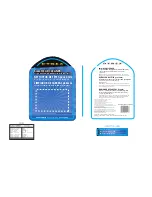
EDITING
44
EN
MasterPage: Left
It is also possible to copy recorded scenes from
the camcorder onto another video unit equipped
with a DV connector. Since a digital signal is
sent, there is little if any image or sound
deterioration.
1
Make sure all units are turned off.
2
Connect this camcorder to a video unit
equipped with a DV input connector using a DV
cable as shown in the illustration.
3
Start playback on the camcorder. (
4
At the point you want to start dubbing, start
recording on the video unit. (Refer to the video
unit’s instruction manual.)
5
To stop dubbing, stop recording on the video
unit, then stop playback on this camcorder.
NOTES:
●
It is recommended to use the AC Adapter as
the power supply instead of the battery pack.
(
●
If a blank portion or disturbed image is played
back on the player during dubbing, the dubbing
may stop so that an unusual image is not dubbed.
●
Even though the DV cable is connected correctly,
sometimes the image may not appear in step
this occurs, turn off the power and make
connections again.
●
pg. 24) is attempted or
SNAPSHOT
is pressed during playback, only the
original playback image recorded on the tape is
output from the DV OUT connector.
●
When using a DV cable, be sure to use the
optional JVC VC-VDV204U DV cable.
Dubbing To A Video Unit Equipped
With A DV Connector (Digital
Dubbing)
Core filter
To DV OUT
DV cable (optional)
To DV IN
Video unit equipped with DV connector
GR-D260PAL.book Page 44 Tuesday, February 8, 2005 3:05 PM













































